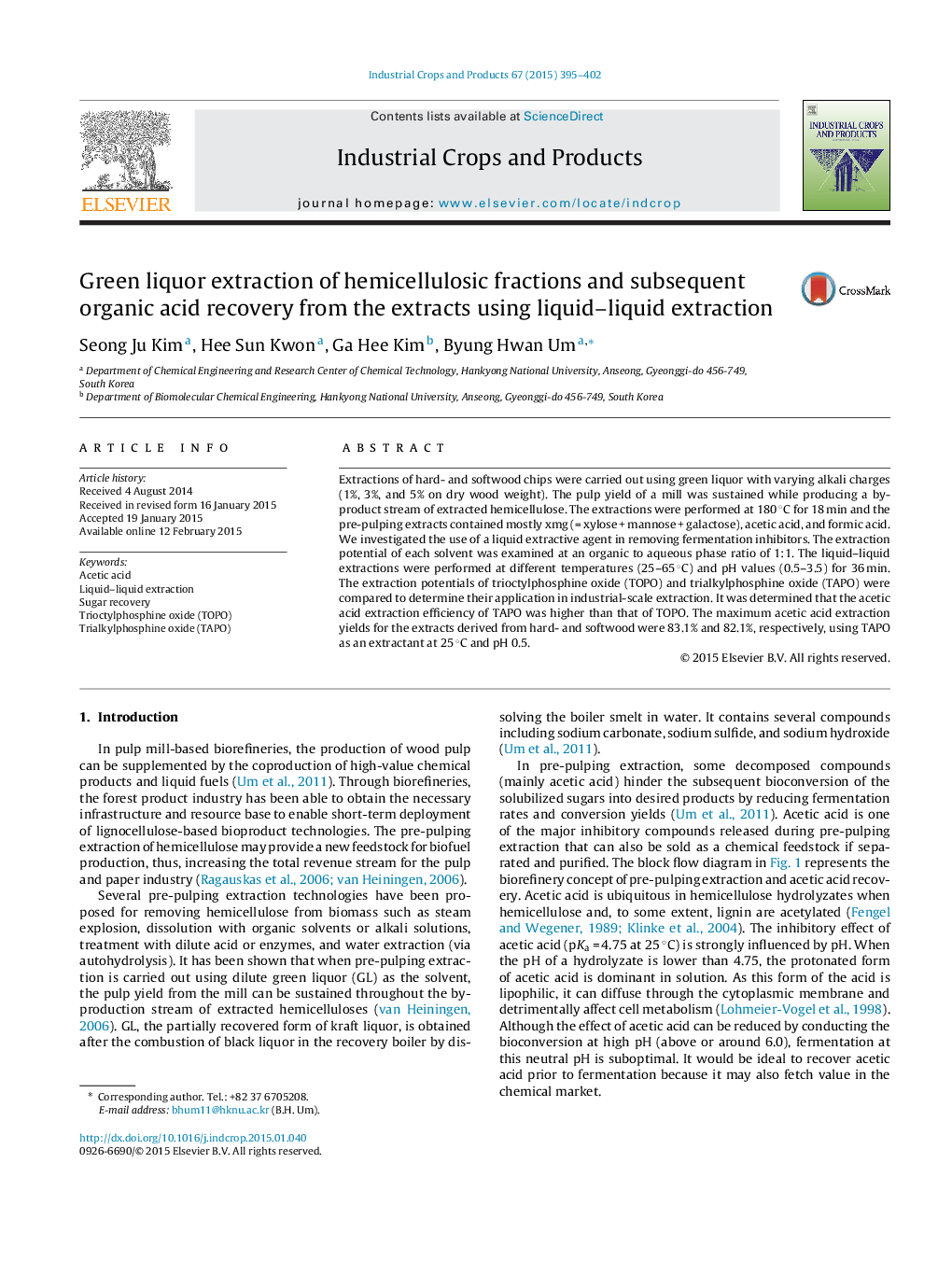| Article ID | Journal | Published Year | Pages | File Type |
|---|---|---|---|---|
| 4513098 | Industrial Crops and Products | 2015 | 8 Pages |
Extractions of hard- and softwood chips were carried out using green liquor with varying alkali charges (1%, 3%, and 5% on dry wood weight). The pulp yield of a mill was sustained while producing a by-product stream of extracted hemicellulose. The extractions were performed at 180 °C for 18 min and the pre-pulping extracts contained mostly xmg (= xylose + mannose + galactose), acetic acid, and formic acid. We investigated the use of a liquid extractive agent in removing fermentation inhibitors. The extraction potential of each solvent was examined at an organic to aqueous phase ratio of 1:1. The liquid–liquid extractions were performed at different temperatures (25–65 °C) and pH values (0.5–3.5) for 36 min. The extraction potentials of trioctylphosphine oxide (TOPO) and trialkylphosphine oxide (TAPO) were compared to determine their application in industrial-scale extraction. It was determined that the acetic acid extraction efficiency of TAPO was higher than that of TOPO. The maximum acetic acid extraction yields for the extracts derived from hard- and softwood were 83.1% and 82.1%, respectively, using TAPO as an extractant at 25 °C and pH 0.5.
Graphical abstractFigure optionsDownload full-size imageDownload as PowerPoint slide
